Understanding the Differences Between Direct Drive & Geared Electric Bike Hub Motors
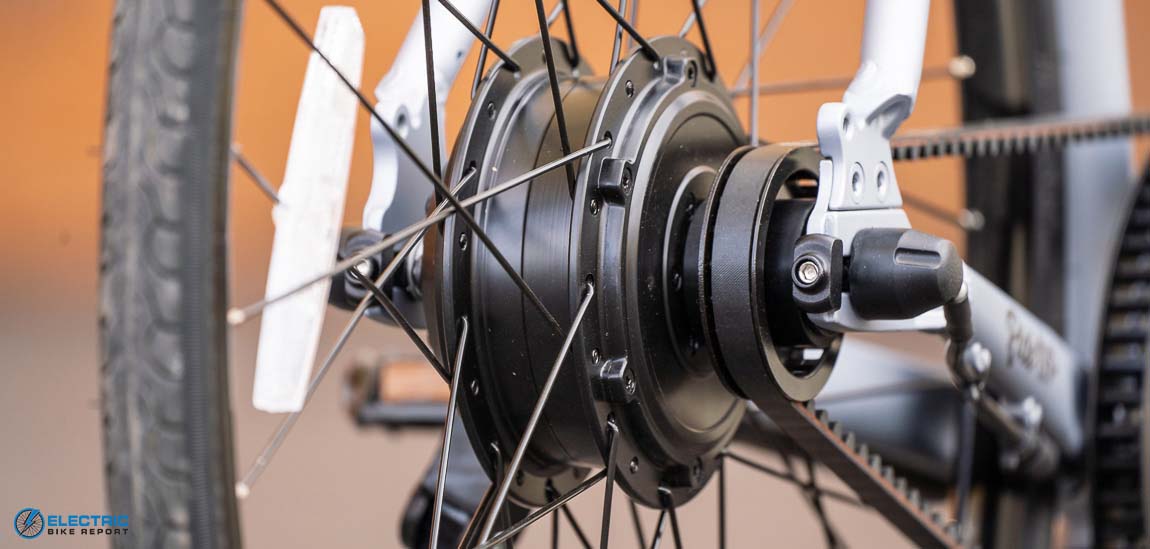
You’ve no doubt seen references to geared hub motors and direct drive hub motors (also known as gearless hub motors) in descriptions of e-bikes. Often the references mention the supposed pros and cons of each but seem to assume you actually know what the different terms mean. If you need a quick rundown of what these two different types of motor design are and which might suit you, then Electric Bike Report has you covered.
What’s the difference between direct-drive and geared hub motors on e-bikes?
The terms geared and gearless refer to the way power is transferred from the motor to drive the bike forward. In practice, the distinction usually applies to hub motors (found in the center of the wheels) rather than mid-drives (found around the pedal cranks) – the vast majority of mid-drives are geared motors.
Geared hub motors overview
A geared hub motor uses a system of gears, within the hub itself, that transfer the turning force of the motor through to the hub and the wheel. It’s most easily seen in the above diagram typical of a budget hub motor. The central gear, fixed to the spinning motor, turns through a series of other gears (called epicyclic and annulus, but that’s not really important…) onto the wheel hub.
The main point to get across is that the gearing inside the hub reduces the fast speed the motor turns at to enable the wheel to turn at a more suitable speed. Motors like to turn at a fast speed, much faster than your bike wheel turns, hence the need for gearing. Geared hub motors are the commonest and most budget form of hub motors.
Gearless (direct drive) hub motors overview
Yes, you guessed it, there are no gears within the wheel hub on gearless hub motors! As the image above shows, the wheel hub in a gearless system is the motor itself. The bunch of copper wires you see are part of the stator on the right. The stator becomes an electromagnet when the motor controller draws current from the battery into the wires. In the hub shell on the left, are the permanent magnets which the stator forces to turn when powered up, by cleverly attracting and repelling magnets at just the right time. No gearing involved – just magnetic forces – hence the gearless moniker.
Whilst this might sound the ideal solution – why introduce extra gearing into the hub if it’s not needed? – it’s not quite as simple as that, as we explain in the pros and cons section below.
Pros Of Geared Hub Motors
- Smaller and lighter than gearless – and in recent years they have been getting smaller and lighter. Gearing within the hub allows the motor power to be more effectively leveraged so geared hub motors are usually lighter and smaller than their gearless counterparts. Geared hub motors usually weigh between 2-4kg and are small in diameter, allowing them to remain pretty discrete on the bike.
- Geared hub motors are better for low-speed, high-torque applications and so are often found on class 1 and class 2 e-bikes that only need motor assistance to a maximum of 20mph. Their ability to generate high torque means they can be a better option for hill climbing (generally you have to go very large and heavy in gearless terms to generate similar torque).
- Most geared hub motors have a freewheel, meaning they are relatively easy to pedal when there is no electric assist
- Often cheaper to manufacture and so to buy compared to gearless systems
Cons Of Geared Hub Motors
- Some geared hub motors can be noisy, though many modern geared hub motors are pretty quiet as motor manufacturers have learned the advantages of new materials and designs such as helical patterned gearing. A test ride is really the only way to find out if the noise level of any particular geared hub motor is acceptable to you.
- Gears wear and may need replacing (though usually this takes at least a few thousand miles, with better quality motor gears going on and on for many thousands of miles). Still, as the gearing is small and designed to make a wheel spin fast, much heavier riders and riders with a lot of cargo may have trouble with long term durability, especially if the motor is regularly worked very hard up steep hills.
- Well-known manufacturers of geared hub motors include Bafang, Shengyi and Mahle (eBikemotion).
Pros of Direct Drive (Gearless) Hub Motors
- Virtually silent running due to the fact there is no gear noise
- Better for speed e-bikes, for example class 3, 28mph assisted e-bikes. Your pedal effort and the motor’s effort are transmitted to the road with two components: speed and ‘torque’, or turning force. As they have an inherent lack of torque (see ‘cons’ below) gearless motors perform better at speed where they can run more efficiently.
- Possibility of regenerative braking, being the ability to recharge the battery when the motor is used as an electronic brake. Whilst this sounds magical, in reality simple physics dictates you are likely to be disappointed with the actual amount of charge put back into the battery. Regenerative braking is much more effective on larger, heavier vehicles (such as electric trains) where energy losses are less, in proportion to the size of the vehicle.
- Still, regenerative braking can be a nice feature on very long downhills as it saves you having to constantly brake and can also stop excessive brake pad wear and help combat brake overheating. The latter can be a potential issue with very heavy e-bikes, such as e-cargo bikes, on long and steep downhills.
- Less moving ports compared to geared motors and so, mechanically speaking, less to go wrong. Still, you generally get what you pay for and, as the set of magnets fixed to the hub shell are essentially stuck on, they have been known to come unstuck on poorer quality motors or one ones worked very hard for a long period of time.
Cons Of Direct Drive (Gearless) Hub Motors
- An inherent disadvantage is that a gearless motor has to run at wheel speed, which may only be 200rpm with 26-inch wheels, or 300-400rpm on a small-wheeled bike. This is very slow for an electric motor and although careful design can allow a gearless hub motor to run quite efficiently at such a low speed the design is never likely to rival the low speed efficiency of geared hub motors where the motor can run at a higher speed.
- They lack torque which equates to ‘twisting force’ or the all important hill climbing ability.
- Usually large and heavy; they have to be, to overcome their inherent lack of torque in the gearless design. Hence gearless motors consume more energy to get them moving and to climb steep hills. They are typically between 4-9kg and over 20cm (8″) in diameter.
- Related to the above, they are less efficient and all other things being equal, will give less range than geared motors.
- Lack of a freewheel means harder to pedal when there is no electric assist
- Well-made ones with regenerative braking can be pricey
Good examples of high-quality gearless hub motors are Neodrives and the Syno and Cyro drives used on Stromer e-bikes.
Geared Hub Vs. Direct Drive Hub Motors: Which Is Best for You?
By now you’ve probably guessed that the answer is: “it depends.”
If keeping your bike relatively lightweight is appealing and if stealthiness, freewheeling and increased range trump longevity, then a geared motor is likely your best option.
If you’re expecting to rely much more heavily on the motor, craving a higher top speed (20+ mph), solid long-lasting value, and a quiet motor, then a super-beefy direct-drive may be best for you.
However, don’t forget that geared and gearless motors are similar in a lot of ways. They can both be set up to use cadence or torque sensing and / or throttle control. At the end of the day if you get a good quality hub motor on a good quality e-bike you will have a great experience.
There’s lots more info about specific hub motors at our Complete Guide to Hub Motors and our Guide to E-bike Conversion Kits.

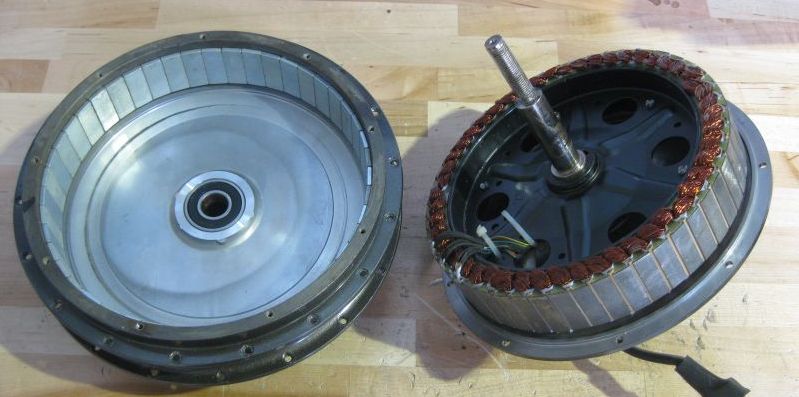
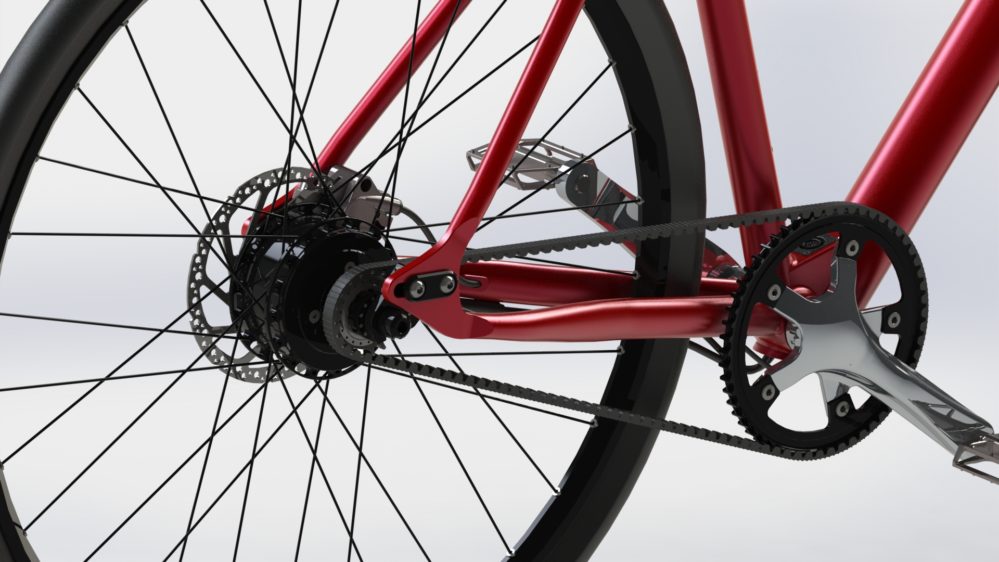
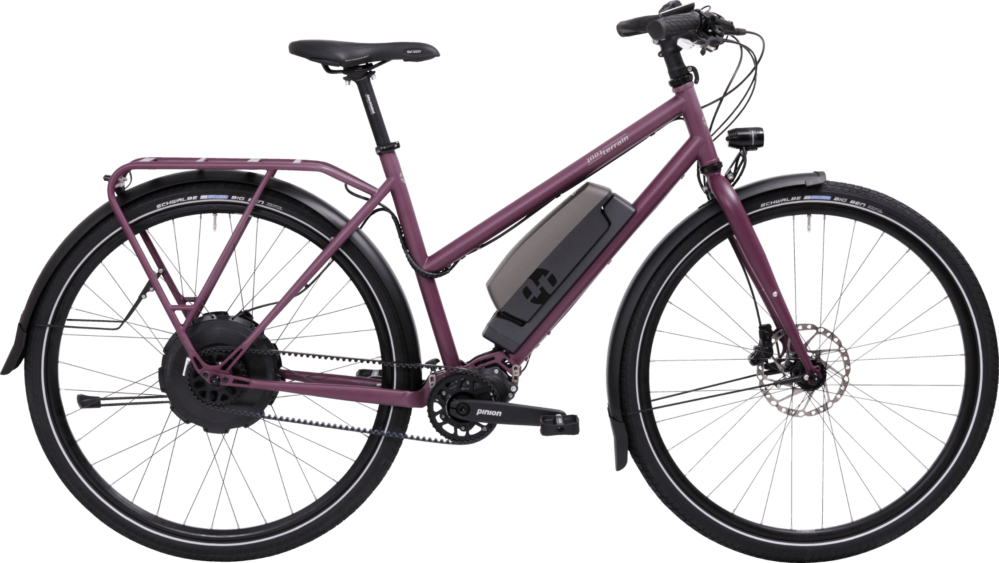
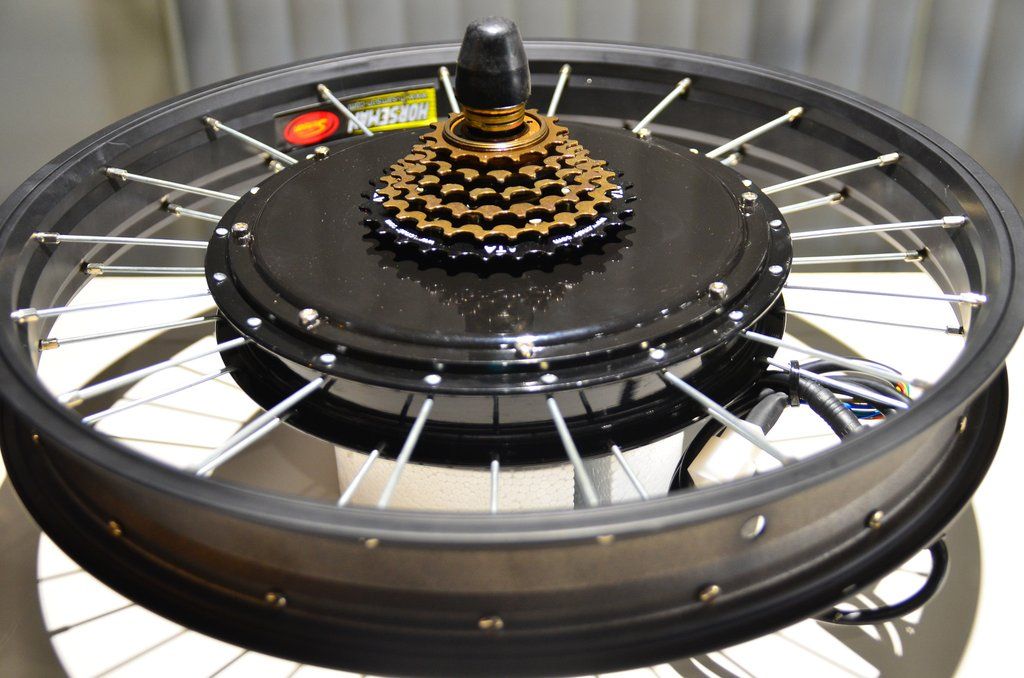
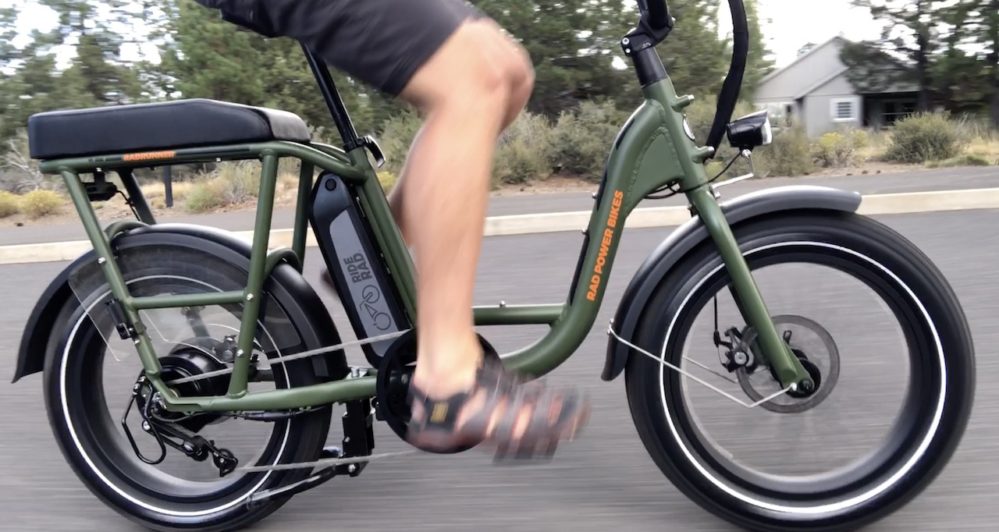
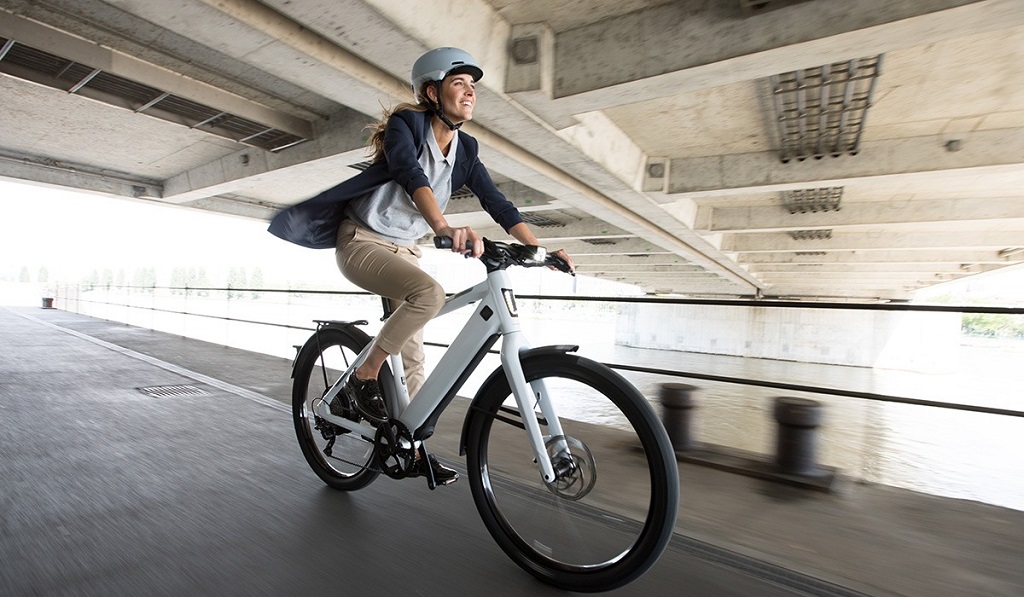



DD is the way to go. Geared is just too slow and sounds weird.
The ampedbike geared kits I sell can go 20+ mph and still freewheel. They have lots of torq to get up the hill around here. Not all geared motors are created equal.
This is a great article.
Mid drive is the answer. Very good article, just the intro section is worthless
Plus Gear drive hubs break down! Mass production made in China and plastic planetary gears! Answer.Grin Tech. They got what you looking for!
I like the idea of the geared motor. As the above article mentions an electric motor wants to spin much faster than our 24″ or 26″ bike wheel is able to spin so we are putting a large strain on a direct drive motor that is being forced to spin along with our wheel at a much slower speed than the motor really wants to spin.
I have had 2 direct drive motors on converted bikes and they both worked fine but I rode a heavy cargo bike with a geared motor up a steep hill that would have bogged down either of my direct drive bikes.
In fact I really want to try a geared motor mounted on the crank shaft instead of in a wheel hub. I just wish this could be done with belts instead of those damn obsolete chains and derailleurs.
I would think belts with Mid-Motor would be the way to go with an internal geared hub in the rear for pedaling. Low maintenance and no grease.
A 20″ wheel bike is a good choice for DD and delivers enough torque and RPM.
I have used Direct Drive and Gear hubs bikes. Top speed is not that important. They all do 20mph which is the legal top speed. My Geared bike can go up to 25mph which is more than enough speed for a bike without suspension. It does make some noise, but not much and at top speed it is quite as a Direct Drive. It is quicker off the line than a Direct Drive and climbs hills better. In my opinion Geared hub are superior to Direct Drive hubs. I want to try out a Mid-Motor bike to see what it is like. I bet in the future, most ebikes with be Geared or Mid-Motor.
Can u give me more info about your motor?
Not true that geared motor are slower, the motor could be wound to various speeds and gear ratio could also be designed for lower reduction. Our motor in the same hub comes in 200, 250, 300 and 350 rpm , 26″ wheel at 350 rpm is 28 mph , and that is with 36V and 37 mph in 48v
This is a great way to get around Philly and any major city . Keep America going green .
We prefer to use the geared motors on most of our conversions. The compact size, lightweight and immediate power feels better on the bikes then the weight and clumsy feel of a direct drive. Considering most of our customers use their bikes for 20 mile or less commutes a day to work, school and play, the life expectancy of the geared motor is definitely extended further than what others try to say.
For heavier rider’s (+240lbs) and Trikes we tend to stick with the Direct Drive model for durability purposes only.
Great article Pete
I would like to install electric motor in my 26″ fat bike. ofcourse it would be a bit heavier and I’m not sure whether I should buy geared or direct drive motor. I prefer maximum torque for start up and I’m not carrying any loads. hope some of you may advise.
I have a GMAC geared hub motor but also has regenerative braking and I can easily go 32 miles an hour and it has lots of torque and the range is excellent sold by grin technologies , unless you want a bike that goes 45 miles an hour direct drive seems pointless
I use geared hub motors as they are lightweight and smaller than direct drive, bikes looks better, almost unnoticeable .
Good vibes bikes conversion kits are amazing! I have it for more than a year with thousands of miles and still like new, very minimalist design kit that only weights 13 lbs with battery included.
I use geared hub motors,
Good vibes bikes conversion kits are amazing! I have it for more than a year with thousands of miles and still like new, very minimalist design kit that only weights 13 lbs with battery included.
I have an Engwe Engine Pro. I have looked almost everywhere to see what brand motor it has. Does Engwe build their own motors? Also, the hub is as small as a geared hub but it has regenerative braking. Hoping you can tell me more about my motor…
Considering some of the comments are from 2013 this article must of had revisions over the years. So here is mine for 2023. My friend has a geared motor. It is loud compared to my brushless gearless hub motor. His tires are 20″ and 26″(he bought the 26 ready to go and built the 20). I rock a 27.5″ on a carbon fiber frame. My bike with battery, wheel lights, etc weighs around 40lbs. His weighs around 75lb. Mine charges across the ground with 30 gears and at full power and full throttle I pull 966 watts off my battery which charges my 48v 1000watt motor. I fly at over 35mph. His top speed is 25mph. Which is my climbing speed, I don’t let it go faster. I have enough torque it came with 2 brackets to strap it in to the frame so it won’t destroy the forks and it WILL wheelie if I ramp it full too soon. So yeah…